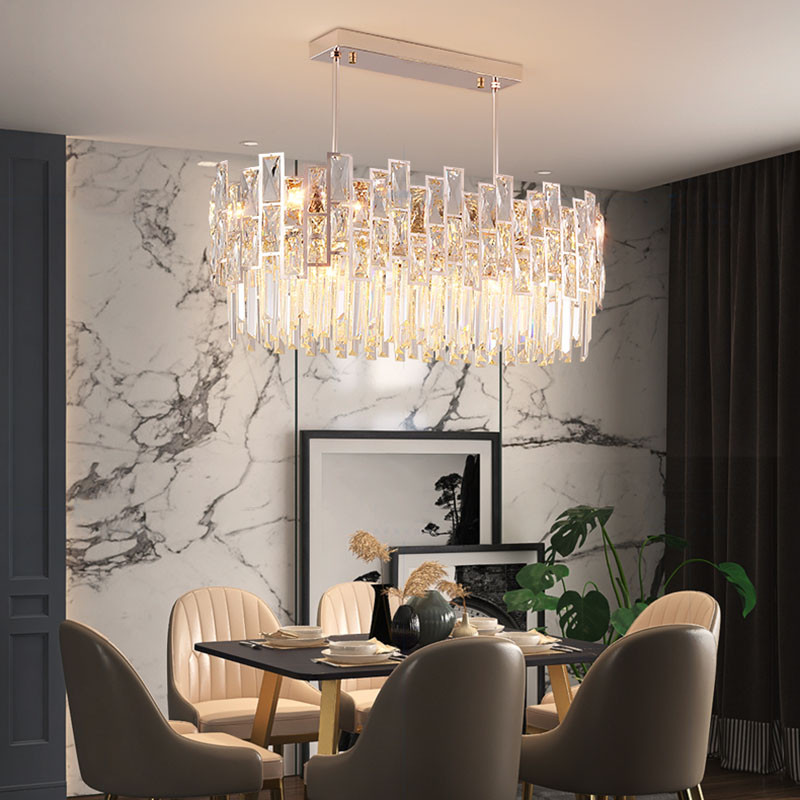Lighting is an essential element in home decor that often goes overlooked. It has the power to transform a room, creating a warm and inviting ambiance or a bright and energetic atmosphere. When it comes to lighting, there are endless possibilities to explore, and one unique option that can elevate the ambiance of any room is a chandelier. Chandeliers are not only functional light fixtures but also stunning works of art that can become the focal point of a space. In this article, we will delve into the world of chandeliers, exploring their different styles, features, and how to incorporate them into your home decor.
Understanding the Importance of Lighting in Home Decor
Lighting plays a crucial role in setting the mood and atmosphere of a room. It can make a space feel cozy and intimate or bright and spacious. The three main types of lighting used in home decor are ambient, task, and accent lighting. Ambient lighting provides overall illumination to a room and is usually achieved through ceiling-mounted fixtures or chandeliers. Task lighting is used for specific activities such as reading or cooking and is typically provided by table lamps or under-cabinet lights. Accent lighting is used to highlight specific features or objects in a room, such as artwork or architectural details.
Different Types of Chandeliers and Their Features
Chandeliers come in various styles, each with its own unique features and characteristics. Traditional chandeliers feature ornate designs with intricate details and are often made from materials like crystal or brass. Modern chandeliers, on the other hand, have sleek and minimalist designs that focus on clean lines and geometric shapes. Rustic chandeliers are perfect for adding a touch of warmth and charm to a space, with their natural materials like wood or wrought iron.
In addition to different styles, chandeliers can also be made from various materials. Crystal chandeliers are known for their elegance and sparkle, while metal chandeliers offer a more industrial or contemporary look. Glass chandeliers can range from delicate and translucent to bold and colorful. The size and shape of a chandelier also play a significant role in its overall design. From small and delicate to large and grand, there is a chandelier size and shape to suit every room.
Choosing the Right Chandelier for Your Room
When choosing a chandelier woolerlife for your room, it is essential to consider the size and style of the space. A small chandelier may get lost in a large room, while a large chandelier can overwhelm a small space. It is also important to consider the height at which the chandelier will be hung. As a general rule, the bottom of the chandelier should be at least 30 inches above the highest point in the room, such as a table or countertop.
Another factor to consider when choosing a chandelier is the type of bulbs it requires. LED bulbs are energy-efficient and long-lasting, while incandescent bulbs provide warm and soft lighting. It is important to select bulbs that are compatible with your chandelier’s socket type and wattage requirements.
How to Install a Chandelier in Your Room
Installing a chandelier may seem like a daunting task, but with the right tools and instructions, it can be done easily. Here is a step-by-step guide to help you install your chandelier:
1. Turn off the power: Before starting any electrical work, make sure to turn off the power to the circuit you will be working on at the main electrical panel.
2. Assemble the chandelier: Follow the manufacturer’s instructions to assemble the chandelier, making sure all parts are securely attached.
3. Attach the mounting bracket: Install the mounting bracket onto the electrical box in the ceiling using screws provided.
4. Connect the wires: Connect the wires from the chandelier to the corresponding wires in the electrical box, using wire nuts to secure the connections.
5. Hang the chandelier: Lift the chandelier and hang it onto the mounting bracket, ensuring it is securely in place.
6. Install the bulbs: Install the bulbs according to the manufacturer’s instructions, making sure not to exceed the recommended wattage.
7. Turn on the power: Once the chandelier is installed, turn on the power at the main electrical panel and test the chandelier to ensure it is working properly.
It is important to note that if you are not comfortable working with electricity, it is best to hire a professional electrician to install your chandelier.
Maintenance Tips for Chandeliers

To keep your chandelier looking its best, regular maintenance is essential. Here are some tips for cleaning and maintaining your chandelier:
1. Dust regularly: Use a soft cloth or feather duster to remove dust from the chandelier’s surface and any exposed bulbs. Be careful not to apply too much pressure or pull on any delicate parts.
2. Clean with a solution: For more thorough cleaning, mix a solution of warm water and mild dish soap. Dampen a soft cloth or sponge in the solution and gently wipe down the chandelier, taking care not to get any electrical components wet.
3. Dry thoroughly: After cleaning, make sure to dry the chandelier thoroughly to prevent water spots or damage. Use a clean, dry cloth or allow it to air dry completely before turning on the lights.
4. Replace bulbs as needed: If a bulb burns out, make sure to replace it promptly with a new one of the same wattage and type.
5. Make minor repairs: If you notice any loose or broken parts on your chandelier, such as crystals or decorative elements, you can make minor repairs using adhesive or by contacting a professional for assistance.
Creative Ways to Use Chandeliers in Your Home Decor
Chandeliers are not limited to traditional spaces like dining rooms or entryways. They can be used in creative ways to add a touch of elegance and sophistication to any room in your home. Here are some unique ideas for incorporating chandeliers into your home decor:
1. Bathroom: Hang a small chandelier above a freestanding bathtub or vanity to create a luxurious spa-like atmosphere.
2. Bedroom: Install a chandelier above the bed as a glamorous focal point or use smaller chandeliers as bedside table lamps.
3. Kitchen: Hang a chandelier above the kitchen island or dining table to add a touch of elegance to your culinary space.
4. Living room: Use a chandelier as a centerpiece in the living room, or hang multiple smaller chandeliers at different heights for a dramatic effect.
Combining Chandeliers with Other Lighting Fixtures
To create a cohesive lighting design in your room, it is important to combine chandeliers with other lighting fixtures. Recessed lighting can be used to provide additional ambient lighting, while table lamps can be used for task lighting in specific areas. It is important to choose fixtures that complement the style and scale of your chandelier, creating a harmonious and balanced look.
Customizing Your Chandelier to Match Your Room’s Style
If you want to add a personal touch to your chandelier and make it match the style of your room, there are several customization options available. You can paint the chandelier to match your room’s color scheme or add shades to soften the light and create a more diffused glow. Another option is to replace the existing crystals or decorative elements with ones that better suit your style.
Creating a Perfect Ambiance with Chandeliers
In conclusion, lighting is an essential element in home decor that can greatly impact the mood and atmosphere of a room. Chandeliers are a unique and stunning lighting option that can elevate the ambiance of any space. By understanding the different types of chandeliers, choosing the right one for your room, and incorporating it into your home decor in creative ways, you can create a perfect ambiance that reflects your personal style and enhances the overall aesthetic of your space. So don’t be afraid to experiment with unique lighting designs and let your chandelier shine!

